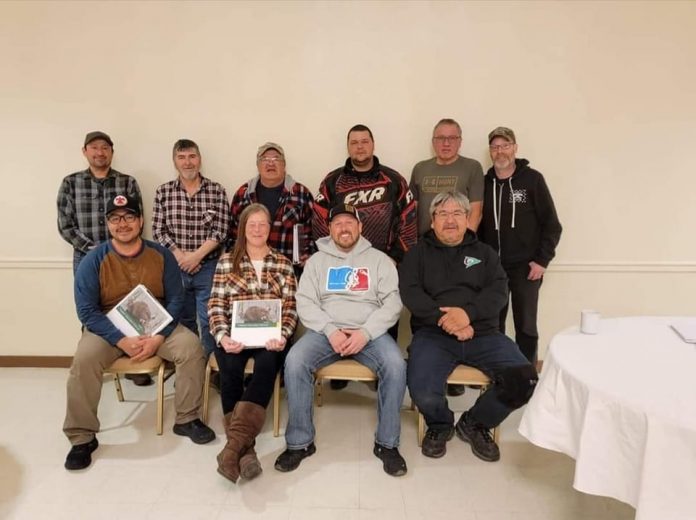
The number of trappers operating in the northern half of the province is about to get a major boost thanks to the Northern Saskatchewan Trappers Association (NSTA).
Previously, there were only two or three certified trainers in the northern half of the province – a huge area. Thanks to the NSTA, there are now 10 more.
There are six districts covering the area between the North Saskatchewan River, the Northwest Territories (NWT), and the Alberta and Manitoba borders, Jarret Nelson, acting NSTA president, said in an interview with The Northern Advocate.
“We have a huge area to look after.”
With just two or three certified trainers, it was too big a job to keep up with demands across the north.
“What we did is train two trainers from each part of the province,” Nelson said. “Basically, I’m in the Central Region, so if there’s training required in Montreal Lake or Weyakwin, then I’d get called to do the training there just for cost reduction, because NSTA is a non-profit organization.
“Everything that we bring in in terms of funding through fundraisers, AGMS, the Conventions, we don’t get any funding [otherwise]. …. We got to make use of our dollars.”
Trainers from the Fish and Wildlife Branch, Ministry of Environment completed the two-day training with the trappers, who will now be able to go into communities in their areas to train prospective trappers to complete licence certification requirements they need to attain a valid licence.
Much of the training involved learning and being able to teach the laws and regulations, trap modifications and snaring techniques. It’s all about humane trapping.
Trainers can go into their communities and train up to 20 people at a time. Potential trappers range from ages 12 years and up.
The training would be two to three days depending on the size of group. It would take longer if going outdoors and setting traps was needed or lure making, snare making to teach new trappers properly.
When trapping an animal, it needs to be quick.
“You want to use certified traps that kill the animal the fasted and that would be conibear traps … so the animal is unconscious and dead within two minutes,” Nelson said. “We want to be respectful in a sense, to make sure that animals is rendered dead within two minutes.
“You don’t want to rush this course. At the end of the day, it’s up to us to provide proper training to these new trappers so they understand the laws and regulations of trapping. The biggest, main part of this is to do it humanely … the most important factor in that trapper trainer course was to build capacity in the north.”
Nelson said the COVID Pandemic has hit the trapping industry hard. Poor prices and crashing fur markets have made it difficult for many trappers to sell their stock.
“There was an auction this past week and there was a lot of furs that didn’t even sell,” Nelson explained.
Thousands were left unsold, and what did sell sold for only a portion of the actual worth, “opposed to four years ago.”
COVID impacted the markets as international buyers from countries such as: China, Greece, Italy and Russia are not travelling to markets, but view pelts through online catalogues.
“Buyers from China have to look at pelts through a computer screen which isn’t going to work,” Nelson said. “There’s no guarantee that what they’re seeing on the screen is what they actually want in terms of quality, therefore; the prices aren’t there because they’re not paying the high price for something they can’t see and hold.”
The industry has been affected “big time.” With the closure of two big fur houses in Canada. Now, there is only one, Fur Harvesters in North Bay, Ont.
“We’re down to one fur house and the buyers aren’t even buying because of COVID. There you go. There’s your market forecast.”
Nelson said he hopes the COVID will end and the markets will return, but added it’s going to take a few years for everything to come back.
In the meantime, the lifestyle is still healthy, Nelson said enthusiastically.
“Don’t get me wrong, there’s still trappers out there, like myself, that will still go trap for the sake of teaching younger generations,” he said. “It’s just who we are. We need to trap. Defending our lifestyle and our traplines.”

